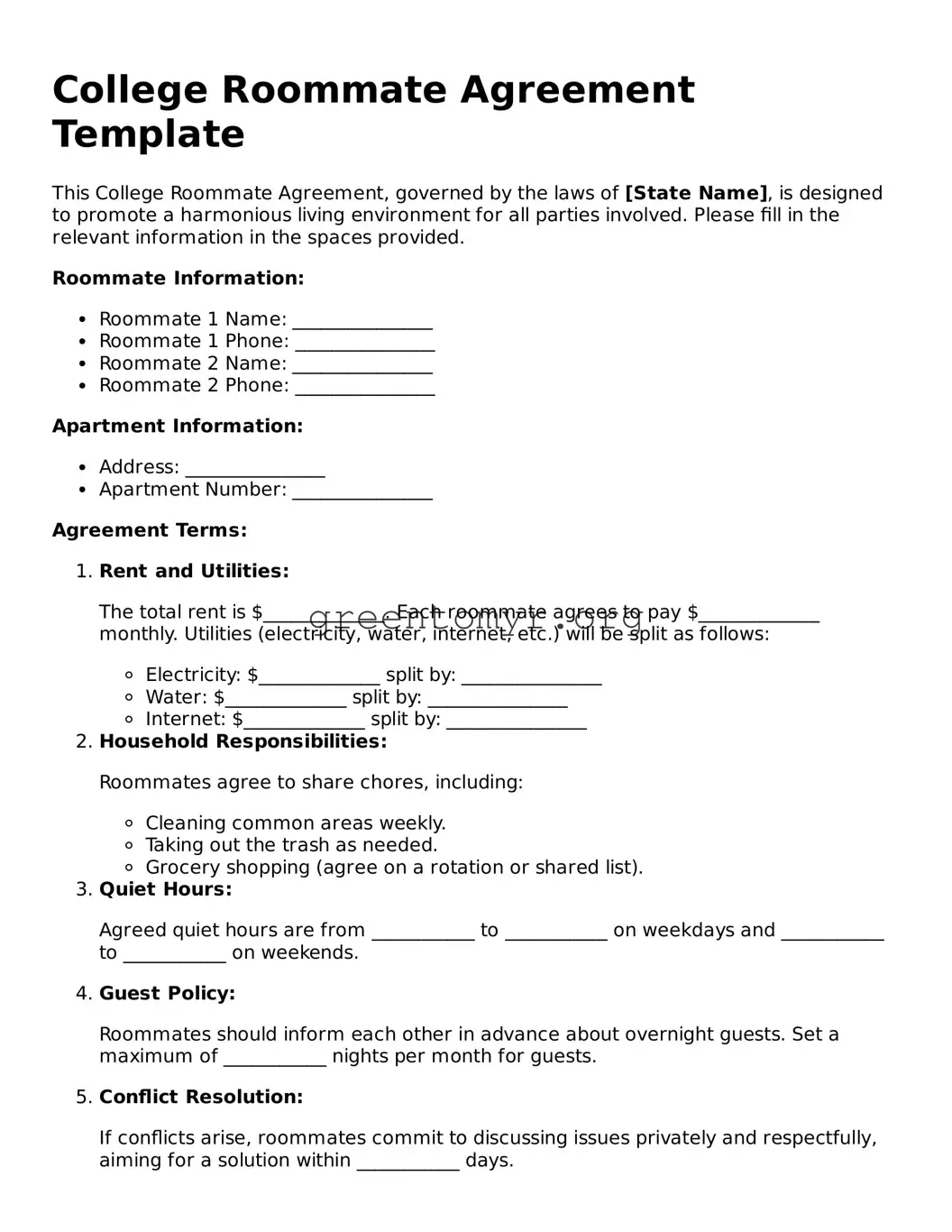What is a College Roommate Agreement?
A College Roommate Agreement is a document that helps two or more roommates outline their expectations and preferences for living together. It provides a framework for communication and conflict resolution, ensuring a smoother living experience.
Why should roommates have an agreement?
Having an agreement can help prevent misunderstandings and address potential conflicts before they happen. By discussing and agreeing on important topics early on, roommates can create a more harmonious living environment and foster better communication.
What topics should be included in the agreement?
Here are some common topics to consider including:
-
Cleanliness and chores
-
Sleep schedules and noise levels
-
Sharing of food and personal items
-
Guests and visitors
-
Study and personal space
-
Utilities and expenses
How do roommates create the agreement?
Roommates should sit down together and discuss their preferences and needs. It can be helpful to list out individual expectations on each topic. Once both parties agree, write everything down to create a formal document. This ensures clarity and serves as a reference point.
Is it necessary to have a written agreement?
While it may not be legally required, a written agreement is highly recommended. It provides a clear outline of what both roommates have agreed to. This can be especially important if conflicts arise later on. A written document can help remind everyone of the agreed-upon expectations.
Can the agreement be changed later?
Yes, the agreement can be updated as needed. Roommates’ needs and preferences may change over time. It’s important to have open communication and discuss any necessary changes. If both roommates agree, you can simply revise the document to reflect the new terms.
What if roommates can’t agree on something?
If a disagreement arises, try to approach it calmly. Discuss the issue openly and consider each other's perspectives. If an agreement still cannot be reached, consider involving a neutral third party, such as a resident advisor, for guidance and support.
How do we handle guests or visitors in the agreement?
Discussing guests is crucial. Set guidelines about how many visitors are allowed, how often they can come over, and what kind of notice is needed. Be respectful of each other’s comfort levels, and accommodate any concerns about privacy or safety.
What happens if someone breaks the agreement?
If a roommate violates the agreement, it’s best to address the issue directly and calmly. Discuss the specific instance and how it impacted you. If necessary, revisit the agreement together to make adjustments or establish consequences for future violations.
Is there a template available for the College Roommate Agreement?
Many colleges provide templates for the College Roommate Agreement to assist students. You can also find templates online that can guide you in creating your own. Tailor the document to fit your specific needs and ensure it resonates with both roommates.
